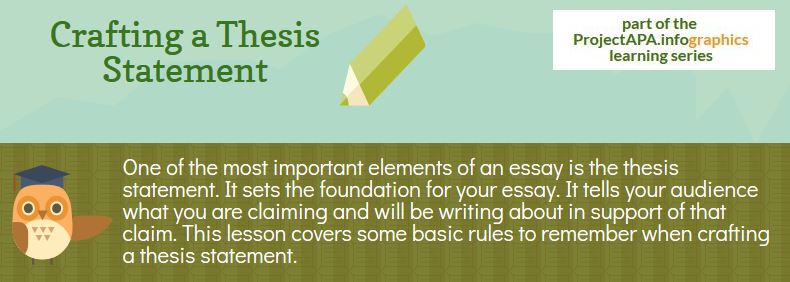### 1. Showing Possession
**Singular Nouns**: To show that something belongs to a singular noun, add an apostrophe followed by an "s". This applies even if the noun ends in "s".
- Example: "The cat's toys are scattered everywhere." (Shows that the toys belong to one cat)
- Example: "James's book is on the table." (Even though James ends in "s", we add 's to show possession)
**Plural Nouns (already ending in "s")**: For plural nouns that already end in "s", just add an apostrophe after the "s" to show possession.
- Example: "The dogs' leashes are in the closet." (Indicates that the leashes belong to multiple dogs)
**Plural Nouns (not ending in "s")**: For plural nouns that do not end in "s", add an apostrophe followed by an "s".
- Example: "The children's playground is newly painted." (Shows that the playground belongs to the children)
**Joint Ownership**: When two or more people own something together, place the apostrophe and "s" after the last noun.
- Example: "Alex and Sam's apartment is spacious." (Indicates that the apartment belongs to both Alex and Sam together)
**Separate Ownership**: When two or more people own separate items, place the apostrophe and "s" after each noun.
- Example: "Lisa's and Mark's books are on different shelves." (Indicates that Lisa and Mark each have their own set of books)
### 2. Indicating Omissions
**Contractions**: The apostrophe can be used to show where letters have been left out in contractions.
- Example: "Don't" is the contraction for "do not." (The apostrophe shows the omission of the "o" in "not")
- Example: "It's" can mean "it is" or "it has." (The apostrophe shows the omission of the "i" in "is" or the "ha" in "has")
**Informal or Poetic Omissions**: Sometimes, especially in informal speech or poetry, apostrophes are used to omit letters to convey a certain style or to maintain rhythm.
- Example: "'Tis the season to be jolly." (The apostrophe indicates the omission of the "i" in "it is")
- Example: "O'er the land of the free..." (The apostrophe shows that the "v" in "over" is omitted)
### Practice with Examples
Ask students to create sentences using both rules. For possession, they might write something like "Sarah's guitar needs new strings." For omissions, they could come up with "She'll be coming to the party later." Encouraging them to identify and correct sentences with incorrect apostrophe use can also be a helpful exercise.
### Common Mistakes to Avoid
- **Its vs. It's**: Remind them that "it's" is a contraction for "it is" or "it has," whereas "its" is a possessive pronoun meaning "belonging to it."
- **Plurals**: Apostrophes are not used to make words plural. For example, "apples" is the plural of "apple," not "apple's."
By providing clear rules, relatable examples, and opportunities for practice, you can help high school students grasp the correct usage of apostrophes.
Give examples of incorrect use of apostrophe
Incorrect use of apostrophes is a common issue in writing, and it often leads to confusion or misinterpretation of the intended meaning. Here are some examples of incorrect apostrophe usage, along with explanations:
### 1. Apostrophes Used to Form Plurals
Incorrect: "I have three apple's in my bag."
Correct: "I have three apples in my bag."
- Explanation: Apostrophes should not be used to make nouns plural. In this case, adding an 's makes it seem like possession is being indicated when it's simply a plural form.
### 2. Possessive Pronouns with Apostrophes
Incorrect: "That book is your's."
Correct: "That book is yours."
- Explanation: Possessive pronouns (yours, hers, its, ours, theirs) do not require an apostrophe, as they already indicate possession.
### 3. Its vs. It's Confusion
Incorrect: "The cat licked it's paw."
Correct: "The cat licked its paw."
- Explanation: "It's" is a contraction for "it is" or "it has," not a possessive form. The possessive form "its" should not have an apostrophe.
### 4. Plural Possessive Mistakes
Incorrect: "All the cats' has their own toys."
Correct: "All the cats have their own toys."
- Explanation: When making a noun plural and possessive, the apostrophe placement is crucial. However, in this case, since "cats" is already plural and the sentence structure does not imply possession directly, no apostrophe is needed.
### 5. Apostrophes with Verbs
Incorrect: "She walk's to school every day."
Correct: "She walks to school every day."
- Explanation: Apostrophes should not be used to form the third person singular present tense of verbs.
### 6. Unnecessary Apostrophes in Dates and Acronyms
Incorrect: "In the 1980's, CD's were very popular."
Correct: "In the 1980s, CDs were very popular."
- Explanation: Apostrophes are not needed when pluralizing dates or acronyms unless there's a risk of misreading.
### 7. Confusing Plural and Singular Possessive
Incorrect: "The three dog's share a single bowl."
Correct: "The three dogs share a single bowl." (If referring to multiple dogs sharing one bowl)
Or: "The three dogs' bowl is in the kitchen." (If emphasizing possession of the bowl by the dogs)
- Explanation: The first incorrect example suggests a singular possessive (one dog owning three of something), which is not the intended meaning. The corrected versions clarify the intended plural nature and the possessive case where necessary.
By recognizing and understanding these common mistakes, writers can improve their accuracy in using apostrophes and thereby enhance the clarity of their writing.
**Singular Nouns**: To show that something belongs to a singular noun, add an apostrophe followed by an "s". This applies even if the noun ends in "s".
- Example: "The cat's toys are scattered everywhere." (Shows that the toys belong to one cat)
- Example: "James's book is on the table." (Even though James ends in "s", we add 's to show possession)
**Plural Nouns (already ending in "s")**: For plural nouns that already end in "s", just add an apostrophe after the "s" to show possession.
- Example: "The dogs' leashes are in the closet." (Indicates that the leashes belong to multiple dogs)
**Plural Nouns (not ending in "s")**: For plural nouns that do not end in "s", add an apostrophe followed by an "s".
- Example: "The children's playground is newly painted." (Shows that the playground belongs to the children)
**Joint Ownership**: When two or more people own something together, place the apostrophe and "s" after the last noun.
- Example: "Alex and Sam's apartment is spacious." (Indicates that the apartment belongs to both Alex and Sam together)
**Separate Ownership**: When two or more people own separate items, place the apostrophe and "s" after each noun.
- Example: "Lisa's and Mark's books are on different shelves." (Indicates that Lisa and Mark each have their own set of books)
### 2. Indicating Omissions
**Contractions**: The apostrophe can be used to show where letters have been left out in contractions.
- Example: "Don't" is the contraction for "do not." (The apostrophe shows the omission of the "o" in "not")
- Example: "It's" can mean "it is" or "it has." (The apostrophe shows the omission of the "i" in "is" or the "ha" in "has")
**Informal or Poetic Omissions**: Sometimes, especially in informal speech or poetry, apostrophes are used to omit letters to convey a certain style or to maintain rhythm.
- Example: "'Tis the season to be jolly." (The apostrophe indicates the omission of the "i" in "it is")
- Example: "O'er the land of the free..." (The apostrophe shows that the "v" in "over" is omitted)
### Practice with Examples
Ask students to create sentences using both rules. For possession, they might write something like "Sarah's guitar needs new strings." For omissions, they could come up with "She'll be coming to the party later." Encouraging them to identify and correct sentences with incorrect apostrophe use can also be a helpful exercise.
### Common Mistakes to Avoid
- **Its vs. It's**: Remind them that "it's" is a contraction for "it is" or "it has," whereas "its" is a possessive pronoun meaning "belonging to it."
- **Plurals**: Apostrophes are not used to make words plural. For example, "apples" is the plural of "apple," not "apple's."
By providing clear rules, relatable examples, and opportunities for practice, you can help high school students grasp the correct usage of apostrophes.
Give examples of incorrect use of apostrophe
Incorrect use of apostrophes is a common issue in writing, and it often leads to confusion or misinterpretation of the intended meaning. Here are some examples of incorrect apostrophe usage, along with explanations:
### 1. Apostrophes Used to Form Plurals
Incorrect: "I have three apple's in my bag."
Correct: "I have three apples in my bag."
- Explanation: Apostrophes should not be used to make nouns plural. In this case, adding an 's makes it seem like possession is being indicated when it's simply a plural form.
### 2. Possessive Pronouns with Apostrophes
Incorrect: "That book is your's."
Correct: "That book is yours."
- Explanation: Possessive pronouns (yours, hers, its, ours, theirs) do not require an apostrophe, as they already indicate possession.
### 3. Its vs. It's Confusion
Incorrect: "The cat licked it's paw."
Correct: "The cat licked its paw."
- Explanation: "It's" is a contraction for "it is" or "it has," not a possessive form. The possessive form "its" should not have an apostrophe.
### 4. Plural Possessive Mistakes
Incorrect: "All the cats' has their own toys."
Correct: "All the cats have their own toys."
- Explanation: When making a noun plural and possessive, the apostrophe placement is crucial. However, in this case, since "cats" is already plural and the sentence structure does not imply possession directly, no apostrophe is needed.
### 5. Apostrophes with Verbs
Incorrect: "She walk's to school every day."
Correct: "She walks to school every day."
- Explanation: Apostrophes should not be used to form the third person singular present tense of verbs.
### 6. Unnecessary Apostrophes in Dates and Acronyms
Incorrect: "In the 1980's, CD's were very popular."
Correct: "In the 1980s, CDs were very popular."
- Explanation: Apostrophes are not needed when pluralizing dates or acronyms unless there's a risk of misreading.
### 7. Confusing Plural and Singular Possessive
Incorrect: "The three dog's share a single bowl."
Correct: "The three dogs share a single bowl." (If referring to multiple dogs sharing one bowl)
Or: "The three dogs' bowl is in the kitchen." (If emphasizing possession of the bowl by the dogs)
- Explanation: The first incorrect example suggests a singular possessive (one dog owning three of something), which is not the intended meaning. The corrected versions clarify the intended plural nature and the possessive case where necessary.
By recognizing and understanding these common mistakes, writers can improve their accuracy in using apostrophes and thereby enhance the clarity of their writing.








